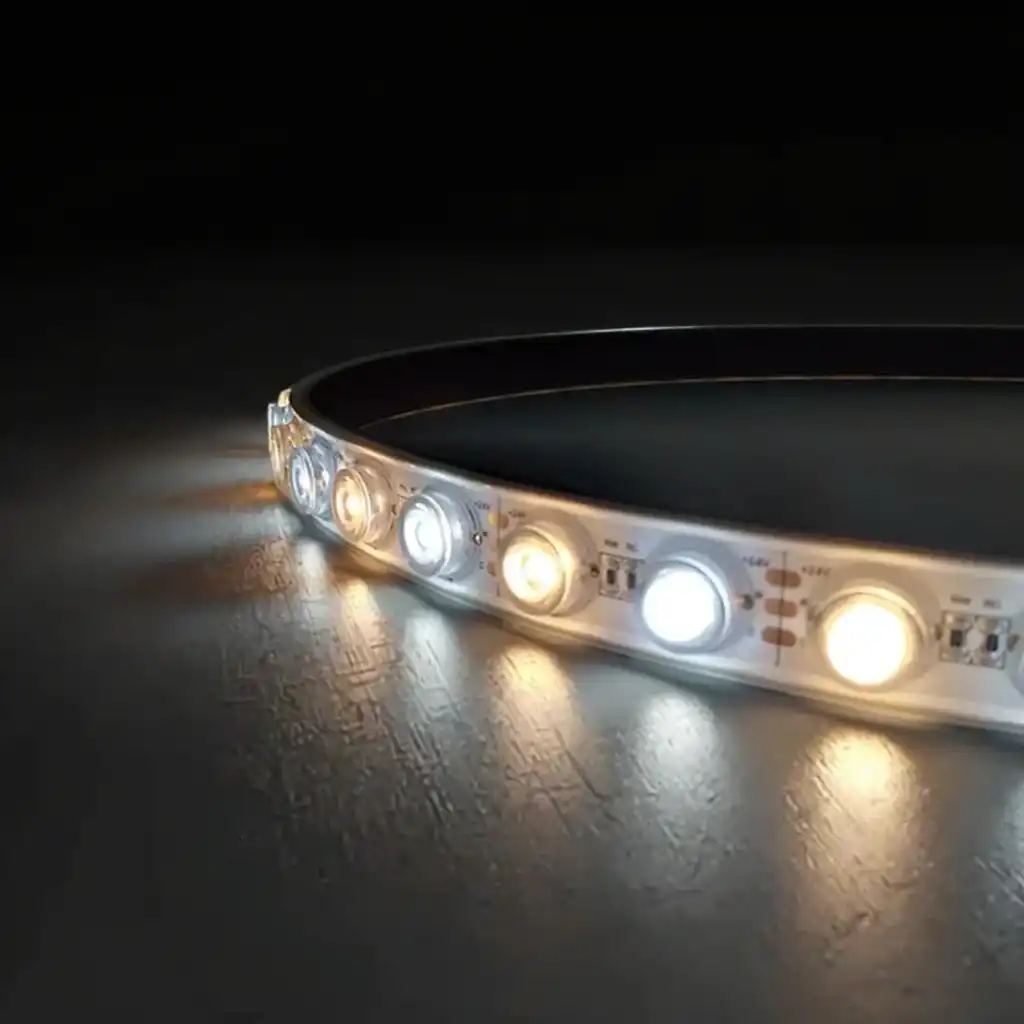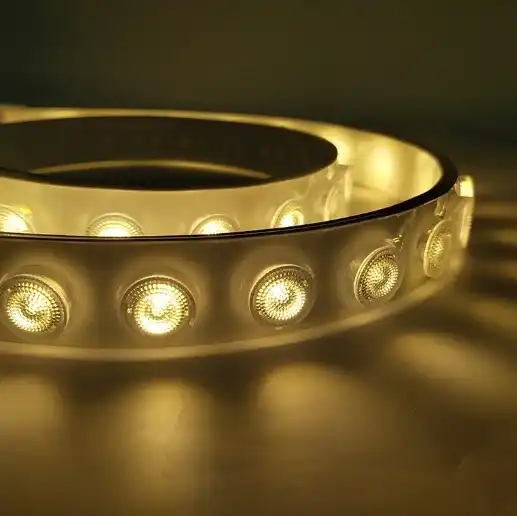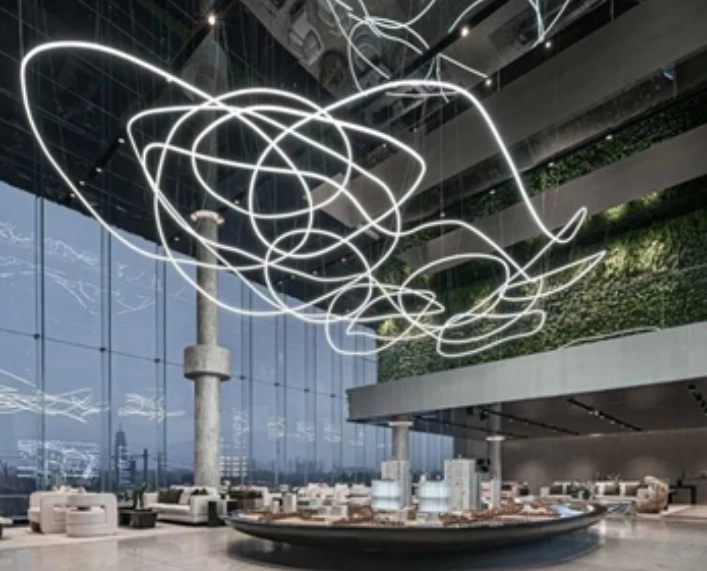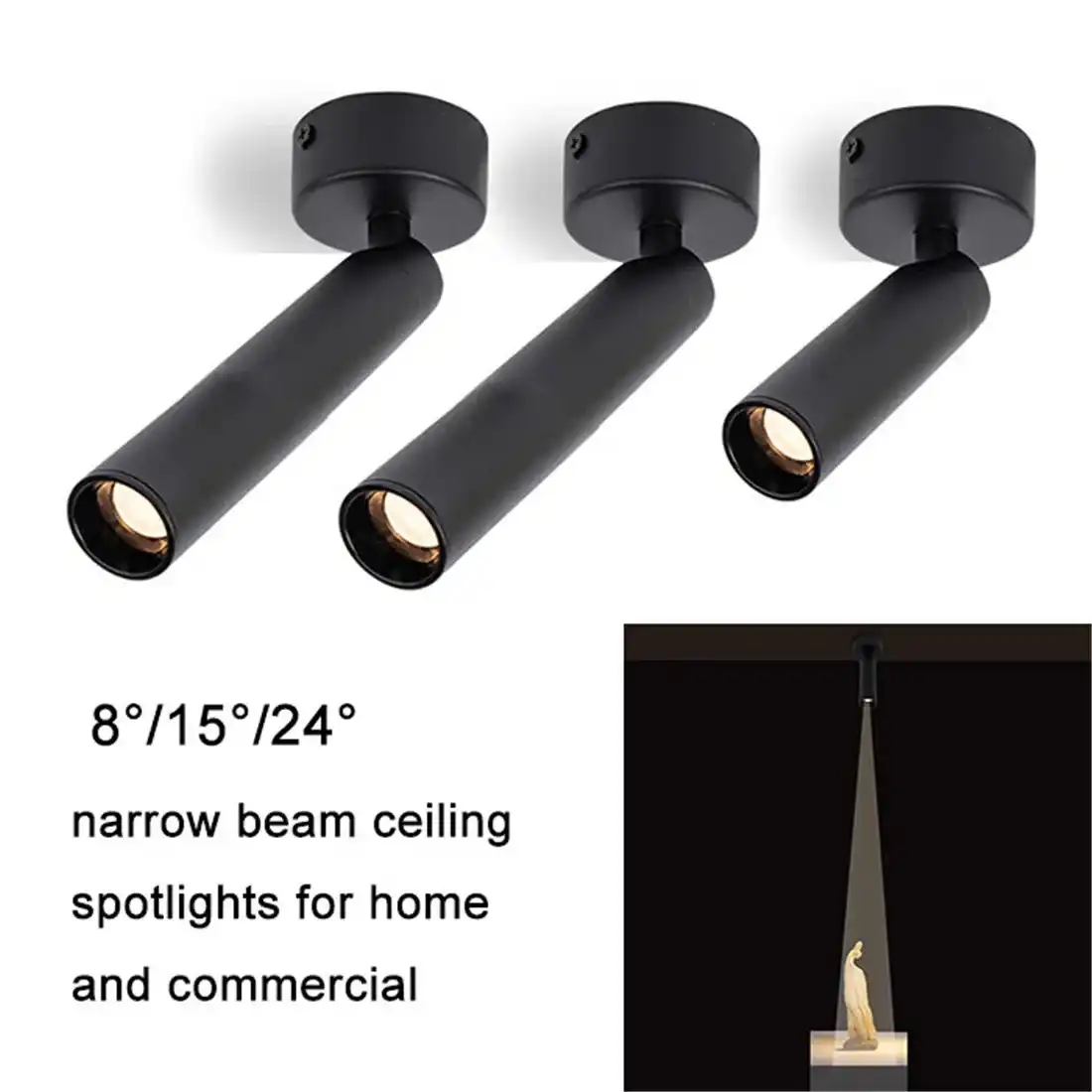The Fundamentals of Lens-Optic Technology in LED Strips
Lens-optic LED strips are a marvel of modern lighting engineering, seamlessly blending the efficiency of LED technology with advanced optical principles. At their core, these strips consist of carefully arranged LED chips, each paired with a miniature lens designed to shape and direct light output. This integration of optics directly into the LED strip itself marks a significant departure from traditional lighting solutions.
The lenses used in these strips are not mere afterthoughts but are precisely engineered optical elements. Typically crafted from high-grade materials like polycarbonate or PMMA (polymethyl methacrylate), these lenses are designed to withstand environmental factors while maintaining optical clarity. The shape and texture of each lens are meticulously calculated to achieve specific light distribution patterns.

How Lenses Manipulate Light
The primary function of the lenses in these LED strips is to control the direction and spread of light emitted by each LED. This is achieved through several optical phenomena:
- Refraction: As light passes through the lens, it bends, allowing for precise control over the beam angle.
- Total Internal Reflection: Some lens designs utilize this principle to redirect light that would otherwise be lost, improving overall efficiency.
- Diffusion: Micro-textures on the lens surface can scatter light to create a softer, more even glow.
By manipulating these properties, lens-optic LED strips can achieve a wide range of lighting effects, from narrow spotlighting to wide-angle wall washing. The ability to control light so precisely at the source level is what sets these strips apart from conventional LED solutions.
Types of Lenses Used in LED Strips
There are several types of lenses commonly used in LED strips, each designed for specific applications:
- Linear Lenses: These create a uniform line of light, ideal for cove lighting or under-cabinet illumination.
- Asymmetric Lenses: Designed to throw light in a specific direction, these are perfect for wall-washing effects.
- Symmetric Lenses: These provide even light distribution in all directions, suitable for general illumination.
- Compound Lenses: Combining multiple optical elements, these can achieve complex lighting patterns.
The choice of lens type dramatically influences the final light output and distribution, allowing for customized solutions to meet specific lighting challenges.
Advantages of Uniform Light Distribution in Various Applications
The ability of lens-optic LED strips to achieve uniform light distribution offers numerous advantages across a wide range of applications. This uniformity is not just about aesthetics; it plays a crucial role in functionality, energy efficiency, and user comfort.
Enhanced Visual Comfort and Reduced Glare
One of the primary benefits of uniform light distribution is the significant improvement in visual comfort. Traditional lighting solutions often create hotspots and harsh shadows, which can lead to eye strain and discomfort. Lens-optic LED strips, however, distribute light evenly across surfaces, reducing glare and creating a more pleasant visual environment. This is particularly beneficial in spaces where people spend extended periods, such as offices, libraries, or retail environments.
Improved Energy Efficiency
Uniform light distribution allows for more efficient use of light output. By eliminating hotspots and dark areas, these LED strips ensure that every lumen produced contributes effectively to the overall illumination of a space. This means that fewer fixtures or lower wattage can be used to achieve the desired lighting levels, resulting in significant energy savings. In large-scale applications like warehouses or parking structures, this efficiency can translate to substantial reductions in energy costs.
Versatility in Architectural Lighting
Lens-optic LED strips excel in architectural lighting applications. Their ability to create seamless lines of light makes them ideal for accentuating building features, creating dramatic wall-washing effects, or providing subtle ambient lighting. The precision of light control allows designers to highlight textures, emphasize structural elements, and create depth in architectural spaces. This versatility makes lens-optic LED strips a favorite among lighting designers and architects.
Enhanced Product Presentation in Retail
In retail environments, uniform lighting is crucial for proper product presentation. Lens-optic LED strips can provide consistent illumination across shelves and display cases, ensuring that products are lit evenly and attractively. This uniformity helps to eliminate shadows and dark spots that might otherwise obscure merchandise, potentially increasing sales by improving the overall shopping experience.
Improved Functionality in Task Lighting
For task lighting applications, such as under-cabinet lighting in kitchens or workbench illumination in workshops, the uniform distribution of light is essential. Lens-optic LED strips ensure that the entire work surface is evenly lit, reducing eye strain and improving visibility. This consistency in illumination is crucial for tasks that require attention to detail or precision work.

Future Trends and Innovations in Lens-Optic LED Technology
The field of lens-optic LED technology is rapidly evolving, with ongoing research and development pushing the boundaries of what's possible in lighting design and efficiency. As we look to the future, several exciting trends and innovations are emerging that promise to further revolutionize the industry.
Advanced Materials and Nano-Optics
One of the most promising areas of development is in the realm of advanced materials and nano-optics. Researchers are exploring new materials with unique optical properties that could dramatically enhance the performance of LED lenses. For instance:
- Metamaterials: These artificially engineered materials can manipulate light in ways not possible with natural materials, potentially leading to even more precise light control and distribution.
- Nanostructured Surfaces: By creating microscopic patterns on lens surfaces, scientists are finding ways to improve light extraction and control, potentially increasing efficiency and reducing glare even further.
These advancements could lead to LED strips with unprecedented levels of light control and efficiency, opening up new possibilities in lighting design and application.
Integration with Smart Technology
The integration of lens-optic LED strips with smart technology is another area of rapid development. Future iterations of these strips may include:
- Dynamic Beam Shaping: Lenses that can change their optical properties in response to electrical signals, allowing for real-time adjustment of light distribution.
- Sensor Integration: Built-in sensors that can detect ambient light conditions or occupancy, automatically adjusting light output for optimal efficiency and comfort.
- IoT Connectivity: Integration with building management systems and IoT platforms for advanced control and data collection on lighting performance.
These smart features could lead to lighting systems that are not only more efficient but also more responsive to user needs and environmental conditions.
Sustainability and Eco-Friendly Design
As environmental concerns continue to shape industry trends, the future of lens-optic LED technology will likely see an increased focus on sustainability. This could manifest in several ways:
- Biodegradable Materials: Development of eco-friendly lens materials that maintain optical performance while reducing environmental impact.
- Energy Harvesting: Integration of photovoltaic elements into LED strips, allowing them to capture ambient light and reduce their net energy consumption.
- Circular Design: Creation of LED strips and lenses that are easier to disassemble and recycle at the end of their lifecycle.
These sustainable innovations could help reduce the environmental footprint of lighting systems while maintaining or even improving their performance.
Miniaturization and Flexible Form Factors
Advancements in manufacturing techniques are likely to lead to even more compact and flexible lens-optic LED strips. This miniaturization could enable:
- Integration into Fabrics: LED strips thin and flexible enough to be woven into textiles for wearable lighting or smart clothing.
- Micro-Scale Architectural Lighting: Ultra-thin strips that can be seamlessly integrated into building materials for subtle yet effective illumination.
- Curved and 3D Formed Lighting: Strips that can conform to complex shapes and surfaces, opening up new possibilities in product design and interior architecture.
These developments could blur the line between lighting fixture and building material, leading to more integrated and aesthetically pleasing lighting solutions.

Conclusion
Lens-optic LED strips represent a significant leap forward in lighting technology, offering unparalleled control over light distribution and efficiency. As we've explored, the science behind these innovative products involves a complex interplay of optical engineering, materials science, and LED technology. The advantages of uniform light distribution provided by these strips extend across various applications, from enhancing visual comfort to improving energy efficiency and versatility in architectural and retail lighting.
Looking to the future, the field of lens-optic LED technology is poised for further advancements. From the integration of smart technologies to the development of more sustainable and flexible designs, the potential for innovation is vast. These developments promise to not only improve the performance and efficiency of lighting systems but also to open up new possibilities in how we integrate light into our built environments.
As lighting technology continues to evolve, lens-optic LED strips will undoubtedly play a crucial role in shaping the future of illumination. Whether you're a lighting designer, architect, or simply someone interested in cutting-edge lighting solutions, staying informed about these advancements is key to leveraging their full potential. For more information on how lens-optic LED strips can transform your lighting projects or to explore our range of innovative lighting solutions, please don't hesitate to contact us at sales@uskyled.com.


![What is Dimmable Track Lighting for Museum: Best Guide [2025]](/icms/upload/0d08cc601e7611f0b542b3ca0c0f4a83/pic/knowledgemanager-knowledgepic/e7879f32605f11f081911f363b8c1ed0/Directory/20250717 dimmable track lighting -1(1)_1752739217941.webp)

